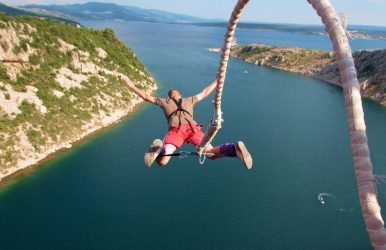Luxe Living: The Best Hotels In Dallas
BY Abdul Aziz Dec 27, 2023
Dallas has a long history of serving as the commercial center of Texas. But there is actually somewhere to stay for every kind of visitor. It includes parents with young children, art enthusiasts, and even those of us who are spa junkies. With so many excellent hotels in the city, your stay will feel like a more opulent version of home. This is regardless of your preference for dramatic design or comforting classics. Below are the best hotels in Dallas, from Uptown to Downtown, Las Colinas, Design District, and all points in between. Throughout a downtown filled with skyscrapers are the Dallas Zoo, the Museum of Art, and botanical gardens. Dallas is passionate about its historical landmarks, sports teams, the Cowboys and Mavericks, and the breathtaking views from Reunion Tower. These are a few of Dallas's most upscale hotels, which will add extra opulence to your Texas vacation. Best Hotels In Dallas Whether it's for a business trip or one of the many things the city has to offer, Dallas is one of the most visited cities in the Lone Star State. Here are the best hotels in Dallas for your lounging pleasure. Ritz-Carlton This Texas franchise of a well-known luxury hotel brand is situated in downtown Dallas, approximately 20 minutes from DFW Airport. Among the greatest hotels in Dallas is The Ritz-Carlton, which features an outdoor pool, on-site spa, and private lounge. With a sauna as well as a steam room, its fitness center is open 24/7. When you're ready to relax in your own space, your guest room offers a large haven with tasteful furnishings and a marble bathroom. The Privacy Wing has 5,500 square feet, five bathrooms with soaking tubs, and enough space for 16 adults to sleep. It is the most lavish guest room in the five-star hotel. The on-site Fearing's Restaurant offers American fare with a southwestern flair and has a cozy atmosphere. The Highland Dallas, Curio Collection By Hilton Situated near Mockingbird Station and across the highway from Southern Methodist University, the hotel enjoys a prime location just outside of the Park Cities. This makes it a popular choice for both university parents as well as business travelers. Its pet- and family-friendly policies make it a great option for a range of traveler types. It also checks all the boxes at a far more reasonable price than many of the downtown options. Knife, the hotel's in-house restaurant, is among Dallas's best steakhouses because of chef John Tesar's skill with dry-aged meats. The Joule One of the best hotels in Dallas while downtown is the Joule on Main Street. You're close to the aquarium, museums, Reunion Tower, Dallas Convention Center, and all the excitement the city has to offer. The boutique hotel features peaceful guest rooms with minibars, premium linens, rain showers, free WiFi, as well as flat-screen TVs. It is tastefully and artistically decorated. A room, suite, or penthouse with 2,500 square feet of elegant space spread over three floors is your option. The contemporary penthouse features a roomy wet bar and a glass staircase that opens to your private patio. The Joule offers a plethora of fine dining options, including underground cocktail bars, lobby and pool bars, and local Texan and Italian cuisine. When you're ready for activities, the opulent hotel offers a fitness center with Pelotons, a rooftop pool with cabanas, and a spa on site. The Adolphus Hotel, Autograph Collection In 2018, after several years of refinement (and a multi-million dollar investment), the first luxury hotel in downtown Dallas made a spectacular return. Even though Adolphus's recent renovation was able to preserve its historical charm, the improved amenities have us hooked. It is yet another of the best hotels in Dallas that will have you feeling like a million bucks. The 30-minute express massage at Spa Adolphus prior to swimming makes the hotel's rooftop pool incredibly soothing. In the lobby are a coffee shop, a glamorous gift shop, and a barbershop. The French Room, with its exquisite dining area, amazing food, as well as flawless presentation, is the true gem. Virgin Hotels Dallas Thanks to Richard Branson's audacious brand of opulent stays, a hotel with a soul located in the Dallas Design District opened its doors in December 2019. Hotel enthusiasts are captivated by many its distinctive features. The sliding doors separate each suite into two separate rooms, and small touches like yoga mats. There are signature red sofas and street-level prices for mini bar snacks and sodas. Although the pool is undoubtedly elegant, the Commons Club appears to be the property's main feature. Dallas offers a member-only vibe with an open public policy, This will guarantee that everyone enjoys a mouthwatering meal and a stunning drink. Hotel ZaZa Dallas Uptown Hotel ZaZa Dallas Uptown is conveniently located near the American Airlines Center. It is just a short stroll from the Arts District and less than five minutes away from NBA games. The upscale boutique hotel has a stylish on-site restaurant and a bustling nightlife. The Hotel ZaZa features a rooftop bar by the pool, along with well-kept landscaping, soothing fountains, and cozy lounge chairs. Couples massages are among the treatments provided by the on-site Zaspa. Also, visitors can unwind in the fitness center or at the outdoor pool. At Hotel ZaZa Dallas Uptown, each guest room has a unique theme with elegant furnishings to match. The opulent hotel rooms come equipped with minibars, plush bedding, whirlpool tubs, and fine linens. Hotel Crescent Court Another one of the best hotels in Dallas is the Hotel Crescent Court. With easy access to Dallas downtown, the Design District, and the DFW airport, Hotel Crescent Court is located uptown. The Dallas Arts District and a range of eateries and retail establishments are all within walking distance of the opulent hotel. The guest rooms are the pinnacle of luxurious living. It has spacious, artistically designed interiors, flat-screen TVs, and charming balconies accessible through sliding glass doors. The larger suites have multiple floors, glass fireplaces, spiral staircases, marble bathrooms, and floor-to-ceiling windows. It has views of the downtown Dallas skyline and garden. The rooftop pool with a gentle waterfall, fitness center, and large spa are all just steps from your guest room. In addition to several dining options, such as the well-known Japanese restaurant Nobu, a sunny casual restaurant, and a Starbucks, Hotel Crescent Court features an on-site social club. Wrapping Up These were some of the best hotels in Dallas. First-rate service and fantastic entertainment make luxury Dallas hotels more than just a place to sleep. There are thirty-six luxury lodging options in Dallas to pick from, each offering stunning rooms along with contemporary amenities. Travelers enjoy Dallas's theater scene. You could reserve a hotel room near popular attractions like Six Flags Over Texas and American Airlines Center. You also have the option to find a luxurious suite in a more sedate area for some downtime. Hotels.com offers an amazing range of exceptional getaway options. It has options for hotels just outside of Dallas or a luxurious hotel right in the middle of the city. Read Also: Sin City Stays: Here Are The Best Hotels In Vegas! Eternal Elegance: A Guide To The Best Hotels In Rome Here Are The 25+ Best Hotels In Mexico City That You Must Visit!












